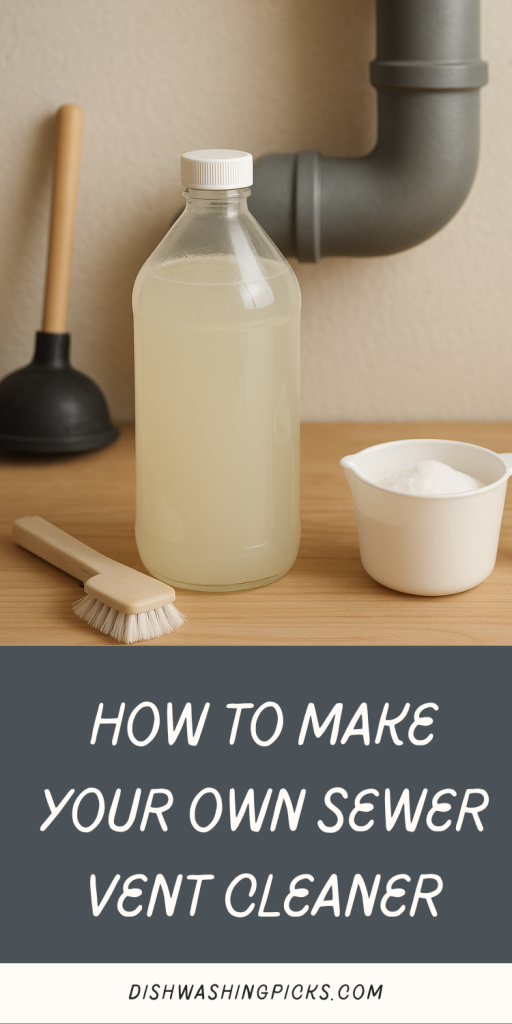
Alright, let’s get into something that doesn’t exactly come up in casual conversation at dinner parties—but honestly, it should. Your sewer vent. Yep, that pipe sticking out of your roof that you probably never think about until your house suddenly smells like… well, let’s just say not roses.
So here’s the deal: the sewer vent (sometimes called a plumbing vent) is like the unsung hero of your plumbing system. It quietly lets gases escape and helps everything flush properly. When it’s clogged? Oh boy, you’ll notice. Slow drains, gurgling toilets, funky smells—it’s basically your house’s way of screaming “help me!”
Now, before you go calling a plumber and dropping a small fortune, let’s talk about how you can actually make your own DIY sewer vent cleaner and fix things yourself. Don’t worry, it’s not as gross or terrifying as it sounds.
Why even clean a sewer vent?
Think of your plumbing like a giant straw. If the top of the straw (the vent) gets blocked—by leaves, bird nests, snow, or who-knows-what—the whole system struggles. Water doesn’t drain right, toilets burp like they’ve had soda, and suddenly you’re living in “Eau de Sewer.” Not ideal, right?
So cleaning the vent isn’t just about smell—it’s about keeping your entire plumbing system running smoothly.
How to spot if your vent is clogged
Here are some telltale signs:
- Toilets gurgle after flushing.
- Drains are slow even though pipes are clear.
- Random foul odors near sinks or tubs.
- Or, my personal favorite: the shower drain that sounds like it’s possessed.
Sound familiar? Yeah, your vent probably needs a little TLC.
DIY Sewer Vent Cleaner: What you’ll need
Okay, let’s get to the good stuff. You don’t need fancy tools—just a little prep and a few things you might already have:
- A garden hose (bonus if it has a high-pressure nozzle).
- Plumber’s snake or a long flexible rod.
- Bucket of hot water with dish soap (yep, seriously).
- Optional: wet/dry vacuum if you really want to get thorough.
And before you ask—no, you don’t need to pour bleach or harsh chemicals down there. Not only can that damage pipes, but it also does nada for solid blockages like leaves or debris.
Step-by-step: How to clean it out
- Find the vent: It’s usually on your roof, sticking up like a little pipe chimney. (Yes, this might involve climbing. Channel your inner adventurer.)
- Check for obvious blockages: Sometimes it’s literally just a bird’s nest or clump of leaves. Use a gloved hand or rod to clear it.
- Flush with water: Stick the garden hose down the vent and run water. If it backs up, there’s still a clog.
- Snake it: Use your plumber’s snake or flexible rod to push through the gunk. This usually breaks things loose.
- Soap & hot water rinse: Pour in that bucket of hot, soapy water to help flush down smaller debris and grease.
- Test it: Run inside, flush a toilet, and see if everything’s flowing nicely again. If the gurgling’s gone—you’re golden.
Extra tips to keep things clear
- Install a vent cap: This stops leaves and critters from setting up shop in your vent.
- Check seasonally: Especially in fall and winter when blockages are more common.
- Don’t ignore smells: The sooner you deal with it, the less likely you’ll end up with a full-on plumbing disaster.
Wrapping it up
Cleaning your sewer vent isn’t glamorous, but it’s one of those DIY chores that can save you a plumber’s bill and a lot of headaches. It’s basically the difference between a house that smells normal and one that smells like a truck stop bathroom.
So, next time your toilet starts talking back to you or your drains act possessed—don’t panic. Grab your hose, your courage, and give that vent a quick clean. You’ll be surprised how much better everything runs after.
